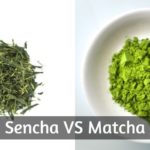If you're a tea lover then you're bound to come across white tea, at some point. If you've never heard of white tea, or would just like to know more about it and why it's such a delicate brew, this beginner's guide is going to help you out.
Keep in mind that white tea is not very common in the West, and thus it's not exactly very well studied (as opposed to green and black tea). Most of the time when you'll buy white tea, you'll buy it with its Chinese name, sometimes translated into English.

Table of Contents
What is white tea ?
White tea is a type of tea made from the Camellia sineisns plant. It's from the same family as green and black tea, along with Oolong and Pu'erh tea.
But, white tea uses different leaves, and is processed very differently than other teas. In fact, it suffers no oxidation and is just dried in the sun.
This gives it a more delicate, flowery note. It's definitely not a tea for newcomers, since it can be too delicate for those who don't know what to expect, instead tasting watery to them.
White tea is more of a 'noble' tea, in that there aren't as many versions as green or black, and the white teas that can be found are very specific, and are made with a variety of techniques which vary from region to region.
Now let's delve deeper into what white tea is, since knowing its history will help us understand it better.
Where does white tea come from ?
White tea is an entirely Chinese development. Meaning, that's also where its going to come from most of the time when you look at a box of tea. AS with pretty much any other tea type from China, it grows in the Fujian province.
Fujian is a mountainous province, and borders the sea, in a humid and warm environment. This is why most teas are grown in this region, since it's got pretty much the best geography to grow tea, which require everything I just described.
In the past few decades white tea is also made from tea leaves brought from Nepal, Taiwan, Thailand, Sri Lanka.
The point of origin of white tea is not exactly known, since no one really agrees exactly who came up with the idea, and when that happened. However most historians agree that it was probably in the 1800s.
Even the exact method of making white tea is debated, but there are some common points.
How is white tea made ?
White tea is made in a few different ways, but there are some common points.
For example the exact leaves or parts of the tea plant vary from region to region. This means that in some places tea leaves are just very young leaves from the tea plant, in others they're not even unfurled and are instead picked as buds.
In still some other cases the leaves are picked when they've just begun to unfurl, and so on.
The common point here is that white tea uses very, very young tea leaves: from buds to barely opened leaves, to only just opened.
Then, the processing itself is very straightforward. Once picked, the leaves are simply left to wither and dry in the sun, which will also lighten their color to a pale yellow-grey-green.
Now, some tea masters stop here and consider the white tea to be ready. Others go on to bake or pan fry the leaves for a few seconds, to make sure there is no oxidation happening in time.
You'll find white teas made in any of the ways I just described, and they each have a slightly different flavor.
What you'll very often find on white tea leaves is those thin, wispy hairs. They're silver-white, and grow naturally on the underside of tea leaves. Once the leaves reach maturity they fall off.
Having those little hairs is a sign the leaves are young, and in some white tea types they're actually sought after. They can't harm you and are not a choking hazard.
What's the difference between white tea and other teas ?
There's 2 big differences between white tea and any other tea out there.
First, white tea is not oxidized. Not even one bit, which places it in a wholly different category than black tea, green tea, Oolong and Pu'erh.
This means that white tea will always have a very delicate flavor, and might just be hard to detect if you're a first time or not even used to green tea.
The second difference is that white tea uses the youngest leaves possible, to the point where often they're not even leaves yet. This brings a different aroma to the tea than fully opened leaves, and more caffeine. I'll get to that in this guide and explain myself.
So white tea really is very different than any other tea you've had before, and in a way it's probably the most delicate and fine tea you'll ever drink.
How to make a cup of white tea
Alright, now let's get to actually making a cup of white tea.
What you'll need is:
- 2 teaspoons of loose leaf white tea (or two teabags)
- 8 oz of hot water, 80 C or 176 F
- strainer or metal filter or a way to remove the tea leaves
- timer, you could use your phone for example
Now, no one really agrees just how much to leaves white tea to infuse. Opinions go both ways - either let it steep for 10 minutes, or just 2.
Those who say 10 minutes are probably thinking that since the tea isn't oxidized, it can't go bitter and since it's also thicker since they're buds not leaves, they would need longer to really infuse.
However, white tea really is a delicate tea, and you can totally ruin the flavor by letting it steep for as long as 10 minutes in most cases. So I recommend you stick to just 2 minutes, on a timer.
Be sure to taste the tea (with a teaspoon) after those 2 minutes and see if you like it. If yes, then stop there, If not, then let it steep more, and keep tasting it every half minute to find your preferred time.
The best thing to do is to use a cup of that's got an infuser incorporated, which you can easily remove afterwards.
For example this one is a large cup, 15 oz/450 ml. It has a metal filter/strainer to let the tea leaves steep, and then you can remove them. And, you can place the metal strainer on the upturned lid that comes with the cup, as it can double as a coaster.
In my opinion this is pretty much the best way to drink tea, since it's only minimal fuss and you get to enjoy your tea right away.
You can check the listing on Amazon here, and read the reviews as well.
If you were to let the tea steep too long, or use water hotter than 80 C/176 F you risk getting bitter tea, either through overexposure, or through scalding the tea. A food thermometer will help you figure out if you're using the correct water temperature, and one can be found on Amazon.
Keep in mind that when you brew the tea you won' get a white or silver brew. Instead you'll get a pale yellow brew, and in some cases you might see some of those tiny, thin hairs floating on your tea. They're safe, don't worry about them.
What does white tea taste like ?
White tea has a very delicate taste, I'm sure you've heard me say that about a dozen times by now.
But really, if you've never had white tea you might just be underwhelmed at first. It's not a 'delicate but definitely sweet or fruity' kid of tea. It really is something you have to build up to.
If you often drink strong tasting drinks like coffee or soda or iced tea, then white tea might just fly under the radar for you.
You best bet would be to first go through black tea, and get used to that. Then, you can go one step further and get used to the delicate green tea, which is going to offer you a mix between light flavor and still actually tasting something clearly.
Once you're finally accustomed to green tea, and it doesn't taste too 'thin' for you, you can consider white tea.
White tea is usually a bit of a flowery tea, in that it's not as 'green' or grape-like as green tea. It's going to present you with occasional hints of vanilla or ginger/lemon but it won't overwhelm you with anything.
White tea is more for relaxing and actively looking for the flavor, tasting every sip to see what notes you can find on your own, since they won't come quickly on their own.
It's a kind of.... elusive tea, when compared to bold black teas for example.
A white tea you'll love to practice on
This Silver Needle is pretty much the best white tea to try. It's the most well known, and the one that fetches a higher price. But it's got a sweet, subtle aroma that's going to teach you exactly what white tea is.
Don't go drinking this tea and expecting to be overwhelmed by flavor. You won't, since Silver Needle is a delicate tea and you need some time to get used to it.
It's called silver because of the little silver hairs on the tea buds, which are proof that the buds are young and delicate, providing you with a good cup of white tea.
This Silver needle comes in a 4 oz/110 gr bag, which is going to last you for about 60-70 cups of tea. It's a loose leaf tea, so it's up to you how much you want to use for each cup.
You can check the listing on Amazon here, and read the reviews as well.
White tea varieties
There aren't many white teas out there, and most will be simple white teas.
For example some of the most famous white teas are:
Bai Mudan, or White Peony. This is a tea that's made with two freshly unfurled leaves, and one bud. This is a formation very often found on Camellia sinensis plants, and if the leaves were left to grow a bit more, it would be the main leaves used for regular green tea.
So, White Peony is a middle white tea you can get, since its leaves are already unfurled but are plucked early in the year. This does not make up a very delicate flavor, instead focusing on a slightly floral note to the white tea. Actually the floral note resembles peonies, hence the name of the tea.
In general, the younger the leaves, or better yet buds, the more delicate the tea. And Bai Mudan is one of the most common white teas you'll find on the market.
Another white tea, the Baihai Tinzhen is also known as Silver Needle. This is the most delicate tea, and it's one of the most highly prized white teas.
Its name comes from the shape of the tea buds, leaves that haven't unfurled yet. This makes the buds look like dried, long, thin sticks which ended up resembling needles.
And the silver comes from the fine silver hairs covering the tea buds, which is the main reason this tea is one of the most expensive and sought after. Even at the tea house I usually get my tea from, a white tea is double or triple the price of a good green tea.
Back the the flavor of a silver Needle, this is one of the more delicate ones, so it's going to be even lighter than White Peony and more floral.
There's also Shoumei, which is a bold white tea, as white teas go. It's plucked later in the year than White Peony, meaning its flavor will be a bit fruitier, and produce a darker color in the cup, but still a pale sort of yellow.
Aside from these 3 main types, there are also blended white teas, which are simply white tea with jasmine flavor, or white tea with lemon and vanilla, and so on. Like pretty much any other tea out there.
A flavored white tea to try
If you'd like to try a flavored or blended white tea before you try a pure white one, then check out this Jasmine white tea.
You'll get a good whiff of jasmine, and the delicate flavor of white tea right under it. It's a great tea to start with if you're not ready to commit to pure white tea.
It comes in a beautiful tin, filled with 50 teabags that are good for 50 cups of tea.
You can check the listing on Amazon here, and read the reviews as well.
Is white tea better than green or black tea ?
The only way you could argue white tea is better than green or black tea is because it contains less tannins, and has a subtler flavor.
Black ta, due to its processing and the way the leaves are handled during the processing, become very oxidized. This changes the natural antioxidants into tannins. These occur naturally in many foods like grapes, some berries, and wine.
Tannins are helpful to the human body if taken in small amounts, but in large amounts can become harmful. This could be a reason white tea is better than black, since it contains nearly no tannins whatsoever.
As for green tea, its antioxidants are well known as helping agents, so there's no reason o shuck it there. But green tea is harsher on newcomers, since its flavor is not exactly the most welcoming for newcomers.
And since white tea is much more delicate, it could be argued that it's better or easier to drink than green tea.
But other than that no, white tea isn't necessarily better than green tea or black tea. And there is no specific task or trial white tea will help you with better than green or black tea.
Why is white tea so expensive ?
White tea is expensive, reaching double the price of a black or green tea, and the bio/organic versions are even 3 times the price !
This is because the leaves used for white tea are hand-picked, meaning there is a whole lot of manual labor going on when it comes to white tea.
Manual labor raises the price for anything, but in this case there's an extra step. You're not only paying for the fact that a real person went out in the tea farms to pluck a tea plant for you, you're also paying for their attention to detain and the scarcity of young leaves, shoots, and tips.
The exact leaves used are very specific, as you've seen in the explanation half a post ago. This means many tea plants have to be inspected and checked for this, which basically means there is a low yield and the whole crop becomes more valuable.
Some teas, like the Silver Needle, and very expensive since they require the youngest, thinnest buds that still have those silver hairs on, and only those.
That's basically it. The exact leaves/buds used for white tea are scarce, and they would otherwise grow into full leaves used for green or black tea, which would fetch their own price.
Does white tea contain caffeine ?
I promised I'd explain the whole 'white tea has more caffeine' thing, and here I am.
White tea does have caffeine, and it's got more than black or green tea. Why ? Because it uses the youngest possible parts of the tea plant, which happen to contain the highest amount of caffeine.
Can you detect the caffeine in your brewed tea ? Not really, for a few reasons.
First, caffeine in tea is more subtle than in coffee. It doesn't give you jitters, and it's rather calming.
Second, caffeine in tea is low in comparison to coffee.
Third, caffeine in white tea is hard to get out into your actual brew, since it requires longer brewing times, and that the leaves are actually oxidized.
For some reason, aside from the short steep time, white tea cannot release its full caffeine content.
Meaning white tea does have caffeine, but it can't give you everything it's got, so black tea ends up winning this round again.
White tea health benefits
There are some health benefits to drinking white tea, but the problem is that they're not very well studied. Since white tea isn't the most popular tea type in the West, the science community's focus has understandably not been on white tea.
Most of white tea's health benefits stem from the high amounts of antioxidants, which seem to be present in all forms of tea made from the Camellia sinesnsis plant.
So this means that most of the health benefits will revolve around reducing heart condition risk, reducing blood pressure, and helping balance cholesterol levels.
Another way white tea may help is fat burning, thus helping you lose weight. Like green tea, white tea contains both caffeine and EGCG (a type of antioxidant) which both help with weight loss, from studies done on green tea.
Lowering insulin resistance is also a possibility, as is help with neural degenerative diseases like Parkinson and Alzheimer.
Final thoughts
White tea is a beautiful tea to get to know, if you're looking for a delicate, mostly floral brew. It's not going to compare to bolder tea, but that's the whole point of white tea.
It makes you stop, think, and feel, trying to get each nuance in your cup of tea. Don't expect bold, fresh bursts of flavor, since this tea is geared towards a completely different experience.
If you want to know more about coffee or tea, feel free to check the related articles below. Who knows what else you might find ?







